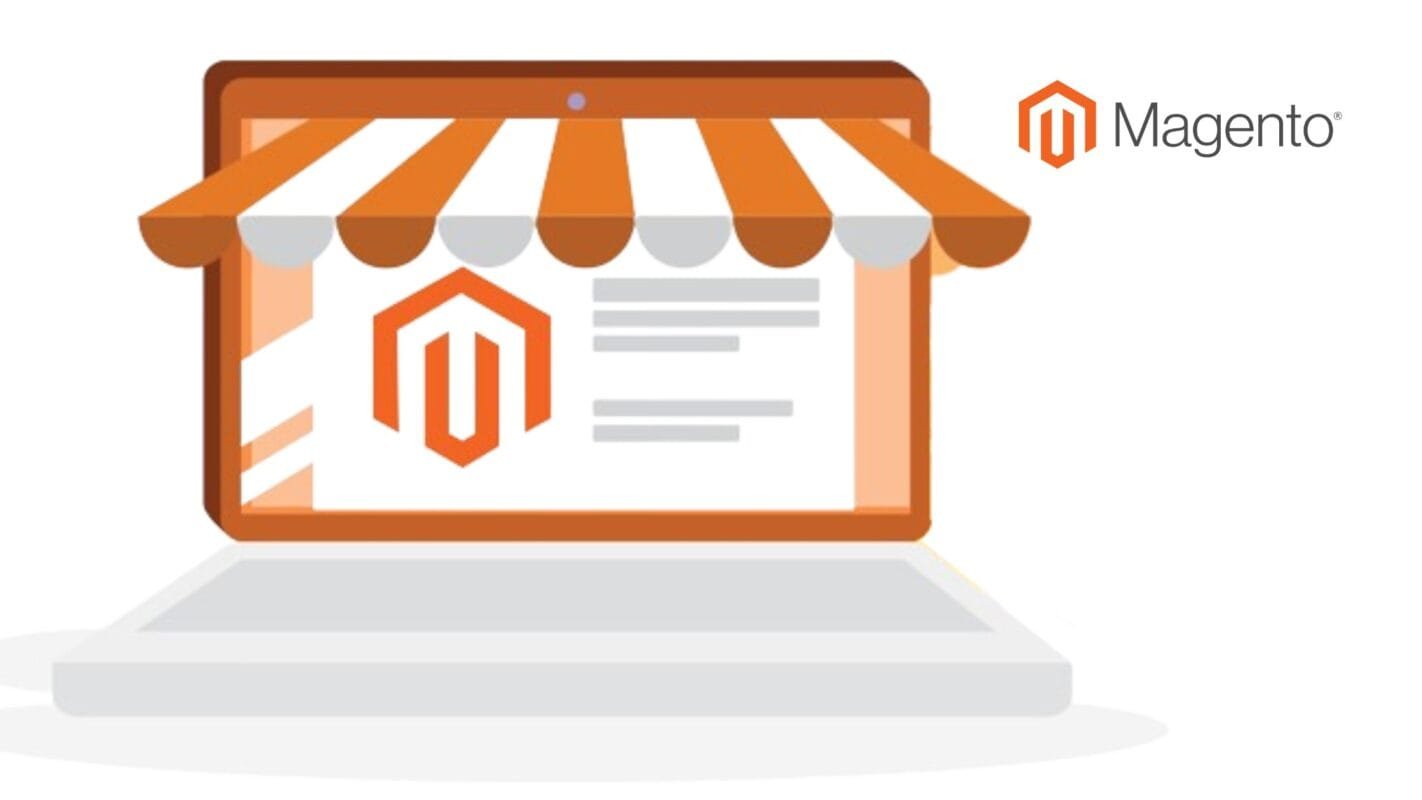The Ultimate Guide to Full-Stack E-commerce Development: From Concept to Launch

In today’s digital-first world, building a successful e-commerce platform goes far beyond just having an online store—it requires a harmonious blend of innovative design, robust back-end functionality, and strategic digital marketing. Whether you are planning to create a business website that stands out in a competitive market or looking to hire website developers to bring your vision to life, this comprehensive guide offers a deep dive into full-stack e-commerce development from concept to launch. Drawing on industry studies, market trends, and real-world data, we’ll explore every stage of the development process, including planning, design, development, integration, and post-launch strategies. This guide is enriched with actionable insights, proven strategies, and a wealth of keywords relevant to every stakeholder—from front end web developer to expert Shopify developers, and from freelance web developers to hiring a designer.
1. Laying the Groundwork: Planning Your E-commerce Vision
Understanding the E-commerce Landscape
Before diving into development, it’s essential to understand the rapidly evolving e-commerce industry. Market research shows that e-commerce sales continue to surge, driven by mobile commerce, personalization, and omnichannel strategies. Recent studies by industry analysts have revealed trends such as:
- Mobile-first approaches: Over 70% of global internet users now shop on mobile devices.
- Personalization: AI-driven recommendations increase conversion rates significantly.
- Omnichannel integration: Shoppers expect seamless experiences whether they’re online or offline.
Armed with these insights, businesses must outline a clear strategy and objectives. Whether your goal is to create cool ecommerce websites or to revolutionize your brand’s online presence, a strong concept and roadmap are indispensable.
Defining Your Objectives and Audience
The first step in your development journey is to define what success looks like. Ask yourself:
- What are your short-term and long-term goals?
- Who is your target audience, and what are their buying behaviors?
- Which products or services will you showcase, and how will you differentiate yourself from competitors?
A well-articulated vision can guide you in deciding whether to hire web designers, work with freelance website designers, or opt for in-house talent. It also sets the stage for choosing the right technology stack and digital marketing approach.
Strategic Keyword Integration for SEO and User Engagement
In planning your e-commerce site, it’s crucial to integrate long-tail keywords and trending terms to drive organic traffic. For example, incorporating keywords such as web application development, website design and SEO services, and make app for website in your content strategy can help position your brand as an authority in the digital space. This step is especially important if you plan to hire web developers or hire website developers who are familiar with the latest SEO techniques and industry trends.
2. Designing the Digital Storefront: UI/UX and Front-End Development
The Role of Design in E-commerce Success
A user-friendly and aesthetically pleasing design is often the first point of contact between your brand and potential customers. Studies have shown that a seamless, responsive design directly correlates with higher conversion rates. For instance, websites with modern, ecommerce site design and intuitive navigation have been reported to reduce bounce rates by up to 30%.
Key design principles include:
- Responsive Design: Ensure your site works flawlessly on desktops, tablets, and mobile devices.
- Intuitive Navigation: A logical layout that makes it easy for users to find what they need.
- High-Quality Imagery and Multimedia: Engaging visuals that represent your brand effectively.
- Fast Load Times: Optimized pages improve user experience and boost SEO rankings.
Collaborating with Front-End Web Developers and Designers
When it comes to transforming your vision into reality, you might consider working with a front end web developer or hire web designer who understands the nuances of modern UI/UX design. Hiring experts like ecommerce web designers or even website designer hire professionals ensures that your website not only looks good but also performs exceptionally.
Key roles in the design phase include:
- UI/UX Designers: Focus on the visual and interactive aspects of the site.
- Graphic Designers: Develop compelling visuals that align with your brand identity.
- User Researchers: Conduct studies to understand user behavior and preferences.
Emerging Design Trends in E-commerce
Recent trends shaping the e-commerce design space include:
- Minimalist and Clean Layouts: Focus on simplicity and ease of navigation.
- Microinteractions: Subtle animations that enhance the user experience.
- Dark Mode Options: An increasingly popular feature that adds a modern touch.
- Voice-Activated Navigation: A nod to the growing influence of AI and smart assistants.
By staying updated with these trends and integrating relevant keywords like hire designer and hiring a designer, you ensure that your digital storefront is not only contemporary but also aligned with consumer expectations.
3. The Backbone of Your E-commerce Platform: Back-End Development
Choosing the Right Technology Stack
Behind every successful e-commerce website lies a powerful back-end infrastructure. The back-end handles data management, security, transactions, and overall site performance. Popular technology stacks for e-commerce include:
- MERN (MongoDB, Express.js, React, Node.js): Offers flexibility and performance.
- MEAN (MongoDB, Express.js, Angular, Node.js): Known for scalability and robust performance.
- LAMP (Linux, Apache, MySQL, PHP): A classic, reliable stack favored by many small to medium-sized enterprises.
Deciding on the right stack depends on factors such as project size, budget, and scalability requirements. Engaging application developers who specialize in these stacks is critical, especially if you plan to hire web developers for web application development.
Scalability and Integration
As your business grows, your e-commerce platform must scale seamlessly. Integration with various third-party services is a key component:
- Payment Gateways: Secure and reliable payment processing systems (e.g., PayPal, Stripe).
- Inventory Management Systems: Ensure real-time tracking and updates.
- CRM and ERP Solutions: Integrate customer data and streamline operations.
- Shipping and Logistics APIs: Optimize the delivery process.
Recent studies indicate that platforms that easily integrate with multiple systems can reduce operational costs by up to 25%. Therefore, it’s vital to incorporate scalability and integration strategies early in the development phase. This can also influence your decision to hire website developers experienced in website and application development.
Security and Compliance
With increasing cyber threats, ensuring your e-commerce platform is secure is non-negotiable. Implementing robust security measures such as SSL certificates, regular security audits, and compliance with standards like PCI DSS are essential. A breach not only tarnishes your brand’s reputation but can also lead to severe financial losses.
Ensuring top-notch security may require collaboration with specialists who can help you hire web developers with a strong background in security protocols and application developers experienced in secure coding practices.
4. Selecting the Perfect E-commerce Platform
Evaluating Popular Platforms
Choosing the right platform can make or break your e-commerce venture. Here are some of the most popular platforms:
- Shopify: Known for its ease of use, scalability, and extensive app ecosystem. Engaging expert Shopify developers or a shopify expert developer can help tailor the platform to your unique business needs.
- Magento: Offers flexibility and customization, ideal for larger businesses with complex requirements.
- WooCommerce: A WordPress-based solution, perfect for small to medium-sized businesses that require customization without breaking the bank.
The Rise of Headless Commerce
Headless commerce is a revolutionary approach where the front-end is decoupled from the back-end. This allows for greater flexibility and the ability to deliver content seamlessly across multiple channels. Key advantages include:
- Enhanced User Experience: Tailor the front-end experience without backend limitations.
- Faster Iterations: Implement changes more quickly based on user feedback.
- Scalability: Easily integrate with other systems and services.
This emerging trend has caught the attention of businesses looking to create business websites that stand out. Integrating headless commerce can also be a selling point when you hire web developers and web application development experts.
5. Integrating SEO and Digital Marketing Strategies
The Importance of SEO in E-commerce
Search Engine Optimization (SEO) is critical for driving organic traffic to your e-commerce site. According to various market studies, nearly 75% of online experiences begin with a search engine. Therefore, optimizing your website for search engines is not just beneficial—it’s essential.
Strategies include:
- Keyword Optimization: Naturally incorporate targeted keywords like website design and SEO services, hire website developers, and ecommerce site design throughout your content.
- High-Quality Content: Regularly update your blog and product pages with informative, engaging content.
- Mobile Optimization: Ensure your site is optimized for mobile users.
- Local SEO: If you have a physical presence, optimizing for local searches can drive more foot traffic.
Digital Marketing and Social Media Integration
Digital marketing goes hand in hand with SEO. An integrated strategy that includes social media marketing, email campaigns, and paid advertising can amplify your reach. Here are some strategies:
- Content Marketing: Create value-driven content that addresses customer pain points.
- Social Media Advertising: Utilize platforms like Facebook, Instagram, and LinkedIn to target specific demographics.
- Email Marketing: Use targeted campaigns to nurture leads and drive repeat sales.
- Influencer Collaborations: Partner with influencers who align with your brand values.
By leveraging these strategies, you can not only improve your online visibility but also attract the right talent when you need to hire web developers, hire web designer, or even engage freelance web developers and website freelance developers for specialized projects.
6. Leveraging Emerging Technologies and Trends
Progressive Web Apps (PWAs) and Mobile Commerce
With mobile commerce on the rise, Progressive Web Apps (PWAs) have become an invaluable asset for e-commerce platforms. PWAs provide users with an app-like experience directly from their browsers, offering:
- Offline Functionality: Users can browse products even without a stable internet connection.
- Improved Performance: Faster load times and smooth interactions.
- Increased Engagement: Push notifications and home screen installation features drive user retention.
For businesses aiming to make app for website integration or seeking innovative solutions, PWAs offer a forward-thinking approach that aligns with current user expectations.
Artificial Intelligence (AI) and Personalization
AI is transforming the e-commerce landscape by enabling personalized experiences. Here are a few ways AI is making an impact:
- Personalized Recommendations: By analyzing user behavior, AI can offer tailored product suggestions, increasing average order values.
- Chatbots and Virtual Assistants: Enhance customer service and streamline interactions.
- Dynamic Pricing: AI algorithms can adjust prices in real time based on demand and competition.
Integrating AI-driven features can set your platform apart from competitors, a strategy that should be highlighted when you decide to hire web developers or collaborate with application developers who specialize in AI and machine learning.
Augmented Reality (AR) and Virtual Reality (VR)
AR and VR technologies are no longer niche trends but are steadily becoming mainstream in e-commerce. They allow customers to virtually try products before buying them—a critical feature for industries such as fashion and furniture. Early adopters of these technologies have reported higher engagement rates and improved customer satisfaction. For businesses looking to stay ahead of the curve, investing in AR/VR development may involve engaging with specialized freelance web developers or website designer hire experts.
Cloud Computing and Scalable Infrastructures
Cloud-based solutions offer unparalleled scalability and reliability, which are essential for handling high traffic volumes and complex transactions. Platforms like AWS, Google Cloud, and Azure provide the backbone for robust e-commerce sites, enabling rapid deployment, scalability, and disaster recovery. This is particularly relevant for businesses planning to create business websites that need to handle sudden surges in traffic, such as during holiday sales or major product launches.
7. Building for Success: From Development to Launch
Pre-Launch Testing and Quality Assurance
Before going live, your e-commerce platform must undergo rigorous testing. This includes:
- Functional Testing: Ensure all features work as intended.
- Performance Testing: Evaluate load times and responsiveness under varying traffic conditions.
- Security Audits: Identify and mitigate vulnerabilities.
- User Acceptance Testing (UAT): Gather feedback from beta users to refine the user experience.
Investing in comprehensive testing is critical, whether you’re working with web developers or freelance website designers. It ensures a smooth transition from development to launch and builds customer trust from day one.
Creating a Seamless Launch Strategy
A successful launch requires meticulous planning:
- Soft Launch: Begin with a beta release to a limited audience to identify any last-minute issues.
- Marketing Push: Coordinate with your digital marketing team to generate buzz through social media, email newsletters, and paid advertising.
- Post-Launch Monitoring: Track user behavior and website performance metrics in real time to address issues immediately.
Adopting these strategies not only minimizes risk but also demonstrates your commitment to quality. This approach is especially beneficial when you’re looking to hire website developers for ongoing website and application development support.
8. Post-Launch: Continuous Improvement and Growth
Monitoring, Analytics, and User Feedback
After launch, the journey doesn’t stop. Continuous improvement is key to maintaining relevance in the competitive e-commerce space. Use analytics tools like Google Analytics, Hotjar, or Adobe Analytics to:
- Track user behavior and engagement.
- Monitor key performance indicators (KPIs) such as conversion rates, bounce rates, and average order values.
- Collect feedback through surveys and reviews.
Regularly analyzing this data will provide insights into what works and where there’s room for improvement, enabling you to make informed decisions for future updates.
Iterative Development and Feature Enhancements
As customer needs evolve, so should your e-commerce platform. An agile development approach allows for iterative improvements, ensuring that your website remains competitive. Consider the following:
- Feature Upgrades: Based on user feedback, implement new features or enhance existing ones.
- Regular Updates: Maintain and update your website to ensure it’s secure, fast, and responsive.
- Expansion of Services: As your business grows, explore opportunities for integrating new technologies such as augmented reality or advanced AI-driven personalization.
This continuous cycle of improvement underscores the importance of having a reliable team of web developers, whether they are part of your in-house staff or freelance website designers and website freelance developers.
Long-Term Growth Strategies and Trends to Watch
Looking to the future, several trends are poised to shape the e-commerce landscape:
- Sustainability and Ethical Commerce: Consumers increasingly favor brands that prioritize sustainability.
- Voice Search Optimization: With the rise of smart home devices, optimizing for voice search is becoming crucial.
- Social Commerce: The integration of e-commerce with social media platforms continues to grow, offering new avenues for customer engagement.
- Blockchain for Secure Transactions: Emerging blockchain technologies promise enhanced security and transparency in online transactions.
By staying abreast of these trends and continuously optimizing your platform, you can ensure long-term success and market relevance.
9. Hiring the Right Talent: Building Your E-commerce Dream Team
The Importance of Assembling a Skilled Team
Whether you’re a startup or an established business, the right talent can make all the difference. From the initial design to the final launch and beyond, you need professionals who can execute every phase with precision. Key roles include:
- Front End Web Developers: Experts in crafting user-friendly interfaces and engaging experiences.
- Back-End Developers and Application Developers: Professionals who ensure the functionality, scalability, and security of your website.
- Expert Shopify Developers: For businesses opting for Shopify, partnering with a shopify expert developer can streamline the development process.
- Digital Marketers and SEO Specialists: To drive traffic and optimize your online presence.
- UI/UX Designers and Graphic Designers: Specialists to create a visually appealing and intuitive design.
Where to Find Top Talent
There are several platforms and methods to find the right professionals:
- Freelance Marketplaces: Websites like Upwork, Toptal, and Freelancer offer access to a pool of freelance web developers and freelance website designers.
- Professional Networks: LinkedIn and industry-specific job boards can connect you with qualified web developers and website designer hire experts.
- Agencies and Consultancies: Sometimes, partnering with a digital agency that specializes in website and application development is the best way to ensure a comprehensive solution.
By clearly defining your project’s scope and leveraging the right channels, you can effectively hire website developers and hire web designers who not only understand current trends but are also capable of adapting to future developments.
10. Maximizing ROI with Data-Driven Strategies
Performance Optimization and Conversion Rate Optimization (CRO)
Even the most well-designed e-commerce site needs constant refinement to maximize performance. Data-driven strategies can help you pinpoint areas for improvement:
- A/B Testing: Experiment with different layouts, call-to-action buttons, and design elements to see what drives the best results.
- Heatmaps and User Session Recordings: Understand how users interact with your site to identify friction points.
- SEO Audits: Regular reviews to ensure that your content remains optimized for both search engines and users.
By continuously testing and optimizing, you can enhance user engagement, reduce bounce rates, and ultimately increase sales—a key consideration when you hire web developers for ongoing support.
Leveraging Analytics for Strategic Decision-Making
Analytics platforms provide a wealth of data that can inform everything from marketing strategies to technical improvements. By regularly reviewing performance metrics, you can:
- Identify trends in customer behavior.
- Adjust marketing strategies based on real-time data.
- Allocate resources more effectively.
Integrating these insights into your development and marketing strategies will ensure that your e-commerce platform remains competitive and responsive to market demands.
11. Final Thoughts: Your Roadmap to E-commerce Success
From the initial spark of an idea to a fully functional, market-ready platform, full-stack e-commerce development is a multifaceted journey that demands both creativity and technical expertise. By understanding the latest trends—whether it’s the surge of mobile commerce, the rise of headless commerce, or the integration of AI and AR/VR technologies—you can build a digital storefront that not only meets customer expectations but exceeds them.
To recap:
- Planning and Strategy: Begin with clear objectives and a deep understanding of your target audience.
- Design and Development: Invest in quality UI/UX design and a robust back-end that supports scalability and security.
- Platform Selection: Choose the right e-commerce platform that aligns with your business goals, whether it’s Shopify, Magento, or WooCommerce.
- SEO and Digital Marketing: Ensure that your site is optimized for search engines and integrated with comprehensive digital marketing strategies.
- Hiring the Right Talent: Whether you choose hire web developers, hire designer, or partner with freelance web developers, the right team is essential for success.
- Continuous Improvement: Post-launch, use analytics and data-driven strategies to refine and optimize your platform.
For businesses ready to take the next step, consider leveraging the power of modern tools and expert insights. Whether your goal is to create business websites that captivate audiences or to partner with expert Shopify developers and shopify expert developer professionals, the opportunities for innovation are endless.
By integrating proven techniques with cutting-edge trends, you can transform your e-commerce vision into a thriving digital enterprise. As you move forward in your development journey, remember that success lies in the details—from seamless UI/UX design to robust back-end systems, from strategic keyword integration like web application development and website design and SEO services to agile post-launch enhancements.
Take inspiration from industry leaders and stay updated with the latest market research and trends. Whether you’re working with freelance website designers, website freelance developers, or in-house teams, a collaborative approach that embraces innovation will set you on the path to success.
12. Additional Resources and Next Steps
For those looking to dive deeper, here are a few additional steps and resources:
- Industry Reports and Studies: Stay informed by reading annual reports from Statista, Gartner, and Forrester Research.
- Webinars and Online Courses: Invest in learning through courses on platforms like Coursera, Udemy, or LinkedIn Learning that focus on e-commerce development, SEO, and digital marketing.
- Networking and Community Engagement: Join online communities and forums where professionals discuss trends related to website and application development and cool ecommerce websites. This can provide real-time insights and foster collaboration.
- Technology Conferences: Attend events like the ShopTalk conference or eTail to network with experts and learn about the latest innovations in e-commerce.
Conclusion
Building a state-of-the-art e-commerce platform is both an art and a science. From the early conceptual phase to the ultimate launch, every step demands careful planning, innovative design, rigorous development, and continuous optimization. Whether your strategy is to hire web developers, hire web designer, or collaborate with freelance web developers and freelance website designers, the success of your online business depends on your commitment to quality and adaptability.
This guide has walked you through every critical aspect of full-stack e-commerce development—from establishing a clear vision and choosing the right technology stack, to leveraging SEO and digital marketing strategies that position your site for long-term growth. As you move forward, use this guide as a roadmap to navigate the complex yet rewarding journey of e-commerce, and remember: the digital marketplace is ever-evolving, and staying informed with trending practices and emerging technologies is the key to sustained success.
Embrace the future with a strategy that integrates both modern technology and proven principles, and watch your e-commerce platform transform from a mere concept into a thriving online business. Start your journey today by connecting with experts, whether you need to hire website developers, seek expert Shopify developers, or simply hire a designer who can bring your vision to life. The digital storefront of tomorrow is built on the insights and innovations of today.






